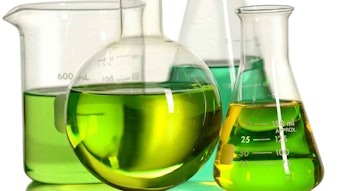Repair, protection and moisturization are key consumer needs in skin care, and components that are used to deliver against these product claims are often electrolytic in nature. Common examples include mono- and multi-valent electrolytic salts of materials such as alpha hydroxy acids, pyrrolidone carboxylic acid (PCA) and phenylbenzimidazole sulfonic acid (PBSA).1 In addition to performance against product claims, though, overall consumer acceptance is heavily swayed by product aesthetics. Sensory performance is an important parameter that provides indulgence to the user and can convey the perception of efficacy. However, balancing rheology and stabilization properties with aesthetic properties in high actives-containing formulations is a common challenge faced by the formulator.
It is well-understood that electrolytic actives can suppress the viscosity of formulations thickened with ionic rheology modifiers, and while nonionic and even slightly anionic polymers such as polysaccharides are inherently more electrolyte-tolerant, they are intrinsically less efficient and known to exhibit unpleasant textures and undesirable sensory properties, such as stickiness.2, 3 Therefore, in order to perform the required emulsification, co-emulsification, stabilization and rheology modification in oil-in-water emulsion systems but with improved electrolyte tolerance, a new polymera based on an anionic pre-neutralized acrylate copolymer was developed by inverse emulsification. Referred to hereafter as the IE-acrylate copolymer, its properties and capabilities were assessed, as described.4–6
Read the full archived feature here.










